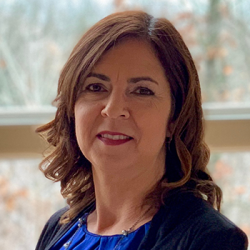
With input from Jaclyn Kamps
Since the start of my journey as a Project Based Learning teacher, I have repeatedly found that well-designed projects inspire students, who love viewing content through a broader, more relevant lens. They more readily engage in learning when they know their work serves a purpose beyond a grade. And as a teacher, I discovered how motivated I became as a result of my students’ excitement and enthusiasm.
Despite my appreciation for PBL, I regularly found myself dreading project work days. Project work time can be tricky for students to navigate effectively, especially when they are more familiar with teacher-directed instruction than they are with the type of student-centered learning inherent in PBL projects. Although I wanted to grant the time and space my students needed to navigate discussions and make decisions, I was reluctant—they simply were not good at using their time effectively.
Then, after reflecting on structures and processes that help adult teams function well, I redesigned student work days to mimic those structures and processes. What follows are five strategies I implemented in my middle school classroom that ultimately (with time and practice) improved student team interactions, increased student interdependence, and enabled project work days to be more productive.
Prepare students for working in teams
High quality projects require students to discuss, debate, and negotiate in small group settings, and oftentimes those interactions happen without teacher guidance. I discovered it was incredibly helpful to start the year with lessons on peer mediation and conflict resolution to empower students with problem solving skills. In the early days of the school year, we practiced those skills in low-stakes settings, such as choosing roles for lab work, reviewing homework, or editing writing. Once projects got underway, my students were far better prepared to have difficult conversations and troubleshoot problems without my assistance.
Use team leaders as liaisons.
Projects provide an excellent opportunity for students to learn valuable leaderships skills. My team leaders were responsible for guiding team meetings and facilitating small group discussions. They let me know when team members needed encouragement or redirection, how project work was progressing, and which issues were proving most difficult for teams to address. With team leaders as my liaisons, I had a much better sense of what was happening (and not happening) during project work time.
Train team leaders.
Team leaders need to know what it means—and does not mean—to lead a group. At the start of each project, I used ideas and resources from the MindTools website to train students in leadership skills, beyond merely explaining team leader responsibilities. As project work progressed, we met periodically to talk through cheers (what was going well with their teams), challenges, and/or any changes that were necessary in order for teams to achieve success. By growing students as leaders, student teams increased their ability to navigate work sessions more effectively.
Structure team meetings with agendas.
Agendas give team meetings a level of structure and focus most student teams need. Agendas don’t require much detail, but they should include the why, the what, and the how of the meeting—why the group is coming together, what needs to be accomplished during the meeting, and how the meeting will be structured. Our meeting agendas generally started with, “The purpose of today’s meeting is to…”, and ended with “By the end of today’s meeting, we need to decide…” When my students were new to PBL, I helped team leaders create agendas. Later in the year, team leaders could take on the responsibility for setting meeting agendas.
Plan frequent opportunities for feedback.
When self- and peer-feedback is only gathered at the end of the project, feedback inevitably feels more punitive than instructive. Instead, I used weekly check-ins to supplement my meetings with team leaders and give me important insights into each student’s experience. Students wrote responses to such questions as, “What did I contribute to my team’s work today?” “How well did I support the other members of my team?” “In what ways did my team members support my work?” “What is going well?” “What could go better?” Their responses informed my next steps—as a result, I was able to support each student’s progress toward meeting team project goals.
Transitioning to teaching through projects not only required me to shift my thinking and practice, but it also required my students to do the same. As I moved from being the “sage on the stage,” to the “guide on the side,” I discovered it was up to me to teach my students how to manage their time and direct their own learning. For their part, my students adapted to the new structures and grew significantly as confident and competent learners, and I came to love, not loathe, project work days.
Here are some related resources:
- Peaceful Conflict Resolution Toolkit from peacefirst.org
- Forming, Storming, Norming, and Performing: Understanding the Stages of Team Formation from Mind Tools
- Making Groupwork Work from Learnhigher
- What To Do During Student Work Time In PBL by Kevin Gant of New Tech Network

